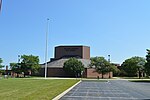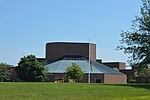Washington Township, Franklin County, Ohio
Townships in Delaware County, OhioTownships in Franklin County, OhioTownships in OhioTownships in Union County, Ohio

Washington Township is one of the seventeen townships of Franklin County, Ohio, United States. It also includes portions of Delaware County and Union County within the city of Dublin. In 1991, the Supreme Court of Ohio ruled that the city of Dublin was permitted to include the entire territory of the city in Washington Township, including areas outside of Franklin County.
Excerpt from the Wikipedia article Washington Township, Franklin County, Ohio (License: CC BY-SA 3.0, Authors, Images).Washington Township, Franklin County, Ohio
Lexi Lane South, Columbus
Geographical coordinates (GPS) Address Nearby Places Show on map
Geographical coordinates (GPS)
| Latitude | Longitude |
|---|---|
| N 40.071388888889 ° | E -83.160277777778 ° |
Address
Lexi Lane South
Lexi Lane South
43002 Columbus
Ohio, United States
Open on Google Maps










